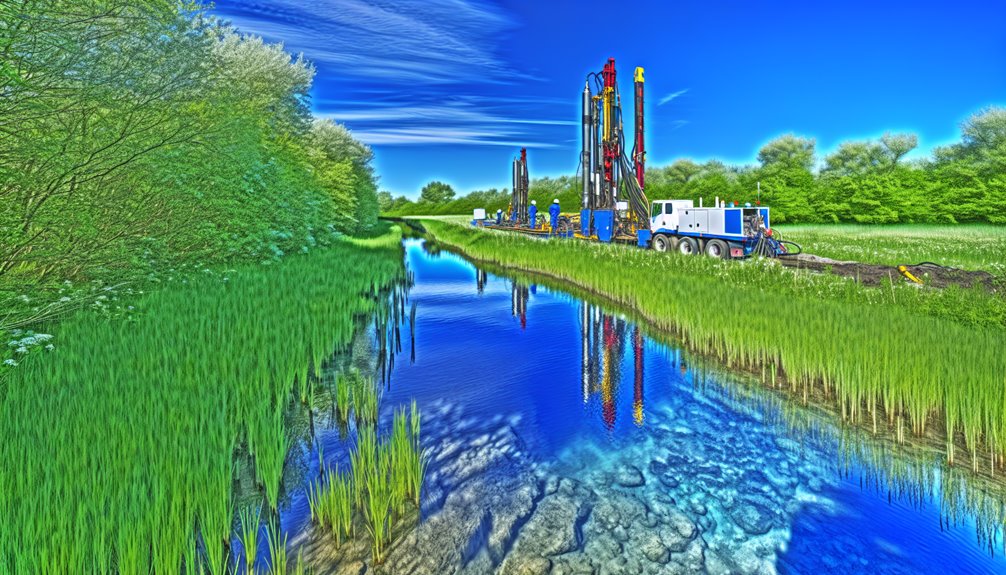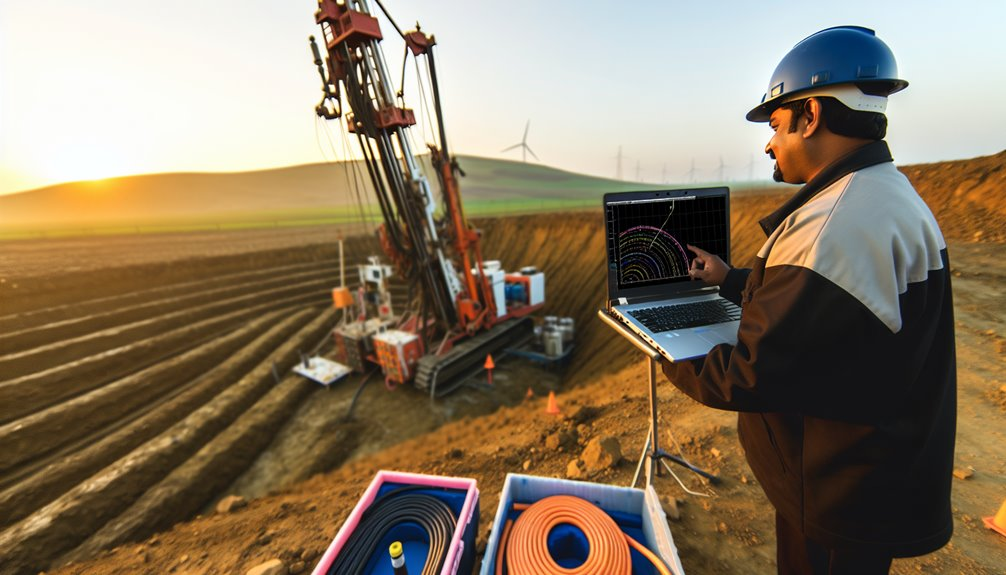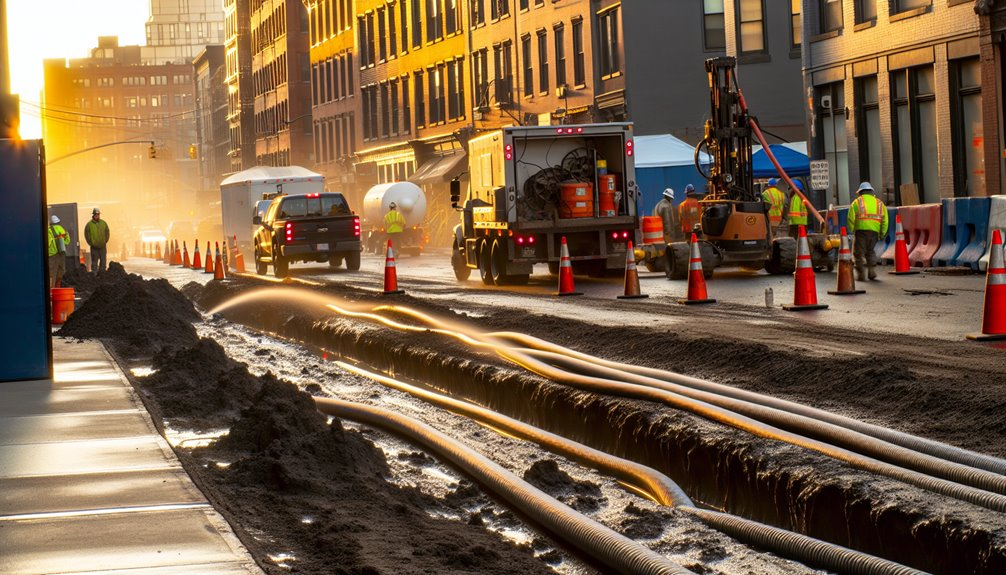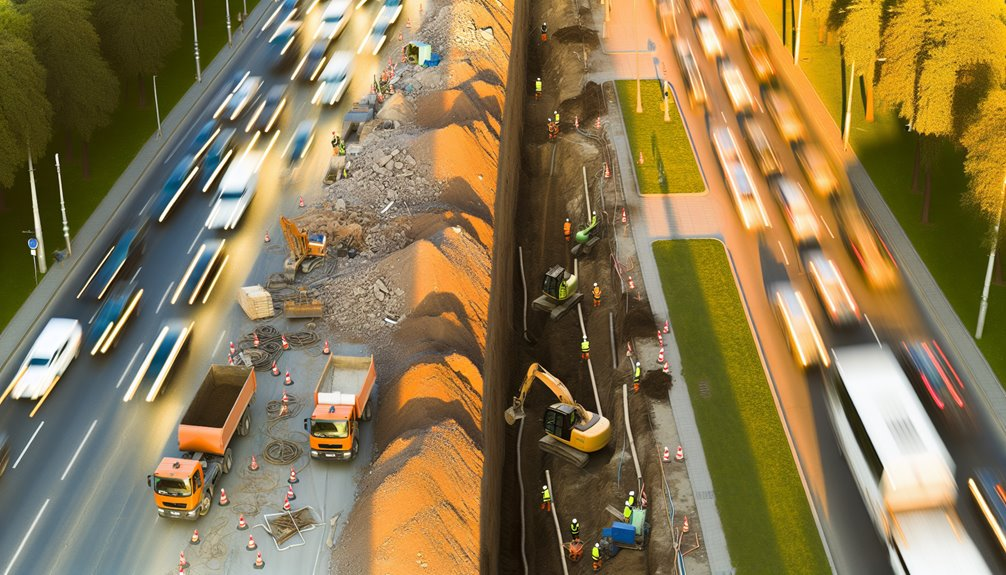When you consider the conventional impact of construction on sensitive ecosystems, horizontal directional drilling (HDD) emerges as a notably less invasive method. By enabling the underground installation of pipelines and cables, you're not only preserving the surface landscape but also minimizing the disturbance to wildlife habitats. However, this approach isn't without its challenges. Let's explore how recent technological innovations and stringent regulatory practices are enhancing HDD's ability to meet environmental standards, and consider what barriers still exist in fully realizing its eco-potential.
Understanding the Environmental Impact of HDD
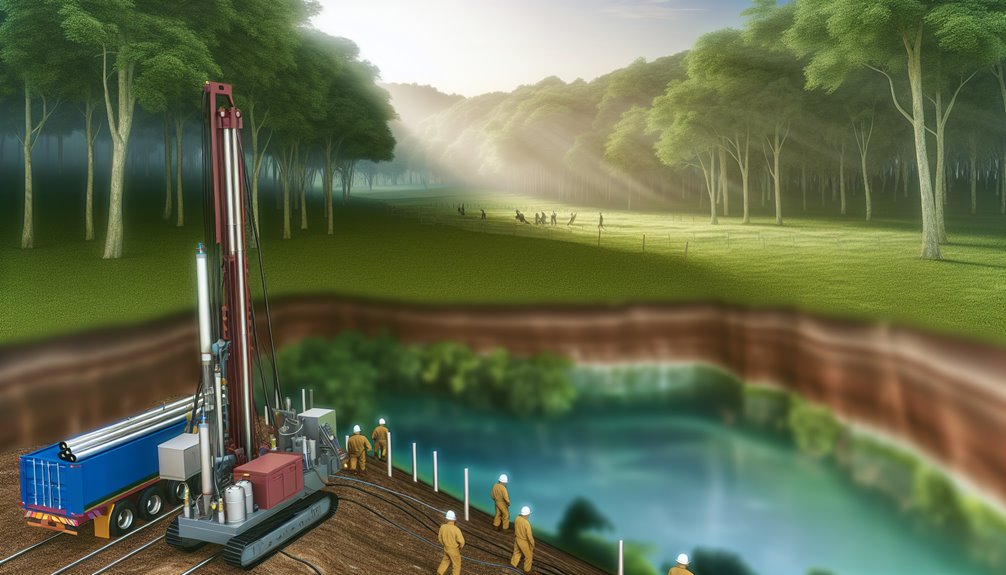
While horizontal directional drilling (HDD) represents a technological advancement in the construction field, it's vital to understand its environmental impact.
You'll find that HDD benefits include greatly minimizing surface disruptions, which in turn preserves green spaces, landscapes, and essential ecosystems.
Unlike traditional trenching, HDD avoids direct interaction with sensitive areas, reducing soil erosion and habitat destruction.
This method not only bypasses underground obstacles but also minimizes the overall impact on natural habitats, supporting sustainable development goals effectively.
Through its reduced surface disturbance, HDD promotes eco-friendly infrastructure development, aligning with strategies that prioritize ecological preservation.
Embracing HDD can lead to a more sustainable construction approach, ensuring that environmental integrity is maintained while meeting modern infrastructure needs.
Additionally, the use of HDD helps in protecting environmentally-sensitive locations, such as wetlands and forests, by enabling subterranean installations that do not disturb the surface.
Strategies for Minimizing Soil Contamination
To effectively minimize soil contamination during horizontal directional drilling (HDD), you must prioritize pre-drill planning and site investigation. Conduct thorough geological assessments and choose drilling techniques that match the specific environmental conditions.
Use drilling muds such as water-based or synthetic-based, which are less harmful, and tailor them precisely to soil and cutter conditions to prevent inadvertent returns (IRs). This careful selection helps maintain the integrity of the borehole and reduces contaminant migration.
For soil remediation post-drilling, monitor and test HDD residuals rigorously. Implementing proper abandonment of boreholes and applying HDD mud judiciously guarantees minimal long-term environmental impact.
Embrace innovative modeling tools to enhance decision-making and guarantee that remediation strategies are accurately targeted and effective. Additionally, consider the environmental impact of the disposal methods for spent HDD mud, as traditional landfilling is both costly and time-consuming.
Protecting Aquatic and Terrestrial Ecosystems During Drilling
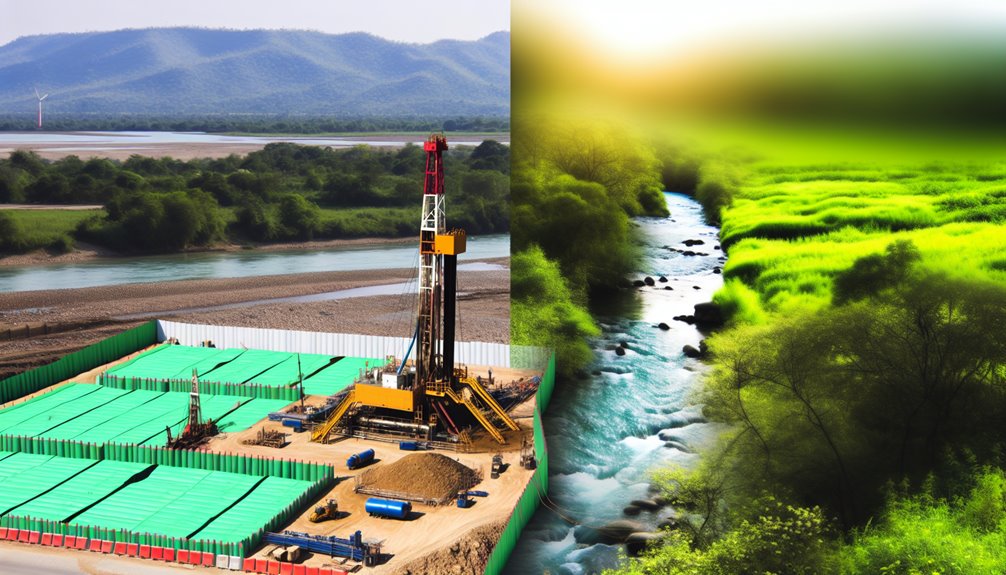
As horizontal directional drilling (HDD) advances, protecting aquatic and terrestrial ecosystems becomes essential.
You're tasked with ensuring aquatic habitat preservation by drilling beneath water bodies without disturbing aquatic life or causing sediment runoff. This approach prevents changes in water chemistry and turbidity, vital for maintaining freshwater ecosystems.
Simultaneously, you must uphold terrestrial ecosystem integrity. By avoiding surface disturbances and traditional trenching, you preserve landscapes and minimize soil erosion. This method markedly reduces the impact on flora and fauna, maintaining the natural flow and stability of sensitive environmental areas.
Your focus on minimizing drilling fluid leakage and managing waste effectively further secures the ecological balance, ensuring sustainable HDD practices.
Technological Innovations in HDD to Reduce Ecological Footprints
Ensuring the preservation of aquatic and terrestrial ecosystems during horizontal directional drilling (HDD) lays the groundwork for implementing technological innovations that further reduce ecological footprints.
Here's how you can harness cutting-edge technologies to enhance sustainable practices and drilling efficiency:
- Advanced Drill Bits and Navigation Systems: Minimize ecological disruption by using precise drilling paths and avoiding sensitive areas.
- Mud Recycling Systems: Reuse drilling fluids, considerably lowering environmental impact and operational costs.
- Automation and Remote Monitoring: Enhance control and reduce the need for physical presence, improving safety and efficiency.
- Enhanced Drilling Rig Technology: Utilize rigs that are compact and energy-efficient, minimizing the physical and ecological footprint.
- Real-Time Data Utilization: Make immediate adjustments to drilling operations, optimizing resource use and reducing waste.
Regulatory and Compliance Challenges in Horizontal Directional Drilling
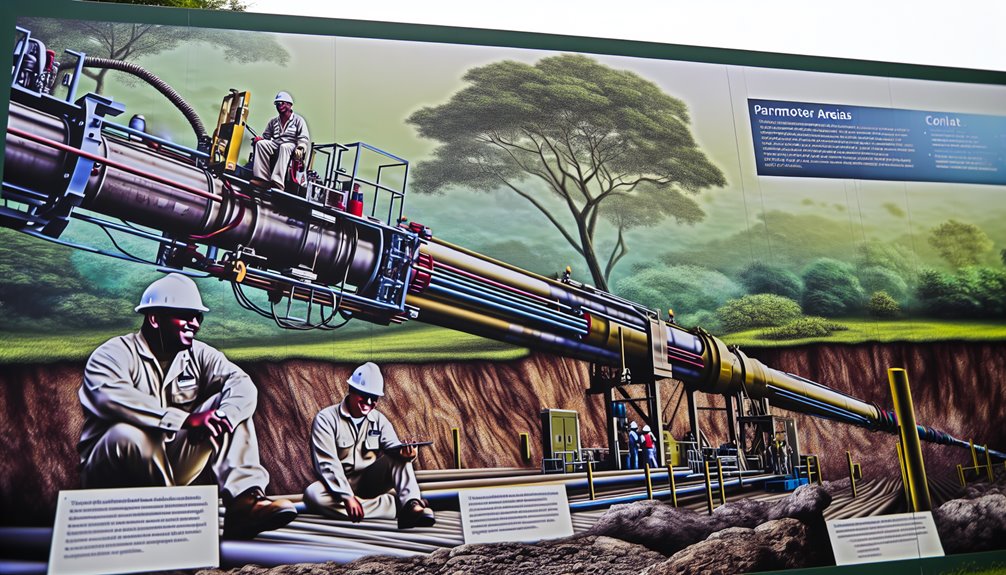
Maneuvering the complex web of regulatory and compliance challenges is essential when undertaking horizontal directional drilling (HDD) projects.
You'll encounter a maze of local, state, and federal regulations, each with its unique demands. This regulatory complexity requires robust compliance strategies to efficiently navigate permitting processes, especially in sensitive environments.
To mitigate potential delays that impact schedules and budgets, it's vital to foster cooperation with local officials and streamline documentation through checklists.
Adherence to evolving policies, such as those introduced by the Biden Administration, demands agility in your operational plans.
Engaging with stakeholders and ensuring strict environmental compliance not only fortifies your project's legitimacy but also protects ecological integrity, preventing costly legal repercussions.
Case Studies: Successful Eco-Friendly HDD Projects
While regulatory and compliance hurdles loom large, several case studies highlight the success of eco-friendly horizontal directional drilling (HDD) projects.
You'll find that these projects not only meet strict environmental standards but also set a benchmark for sustainable practices in the industry.
- Minimized Surface Disruption: By reducing the need for extensive excavation, these projects preserve natural landscapes and protect local wildlife.
- Reduced Soil Erosion: Small entry and exit points limit soil disturbance, maintaining soil integrity and preventing sedimentation in nearby water bodies.
- Underwater Installations: Techniques allow for drilling beneath water bodies, safeguarding aquatic habitats and maintaining ecosystem balance.
- Eco-Friendly Technologies: Advanced drill bits and recycling systems minimize environmental impact while enhancing efficiency.
- Community Engagement: Effective communication with local communities guarantees support and awareness of the environmental benefits.
These initiatives demonstrate that you can achieve technical efficiency alongside ecological responsibility.
Conclusion
Horizontal directional drilling (HDD) offers a strategic solution to environmental challenges in infrastructure development. By employing advanced technologies and adhering to stringent regulations, you can greatly minimize ecological footprints. This technique not only protects ecosystems but also guarantees compliance with environmental standards. Embracing HDD in your projects can lead to successful, eco-friendly outcomes, exemplified by numerous case studies. Consequently, HDD stands as a pivotal tool for sustainable development in sensitive areas.
If you're curious to learn more about how HDD can benefit your projects, I invite you to visit Boring Bros at boringbro.com or give us a call at (954) 639-6167. We'd love to chat and help you explore the possibilities for sustainable development together!

